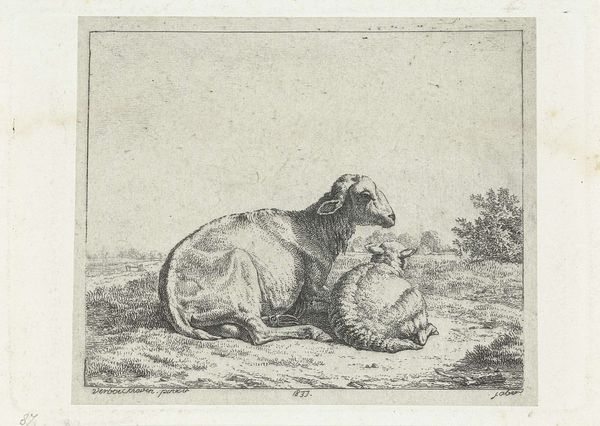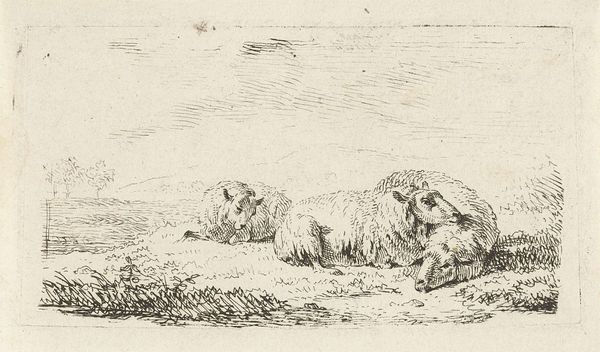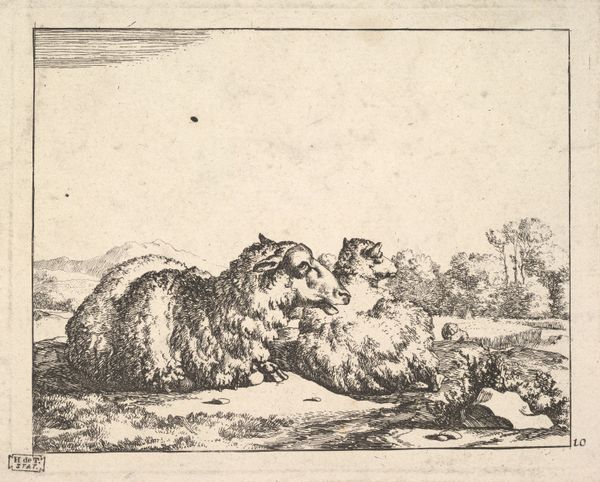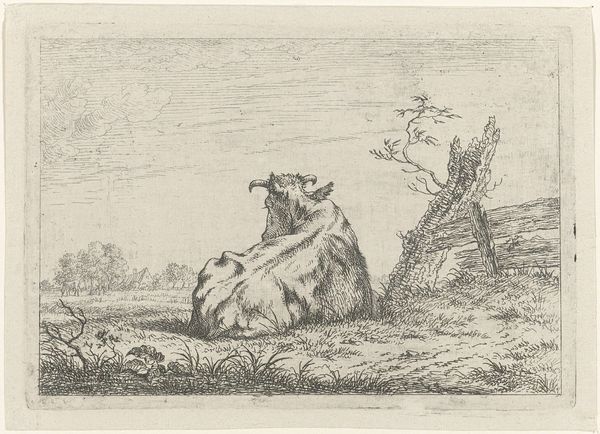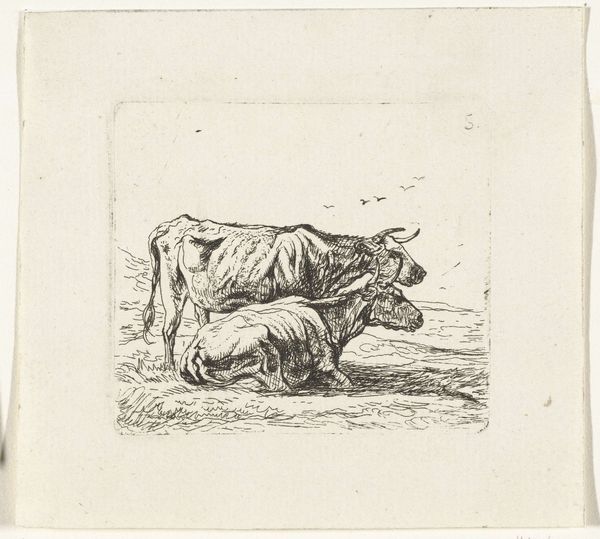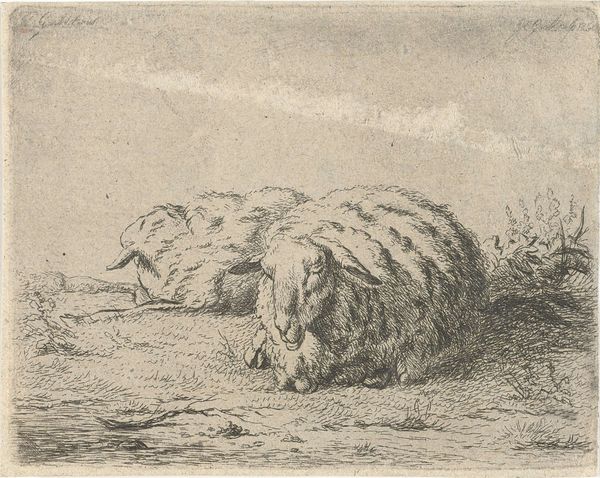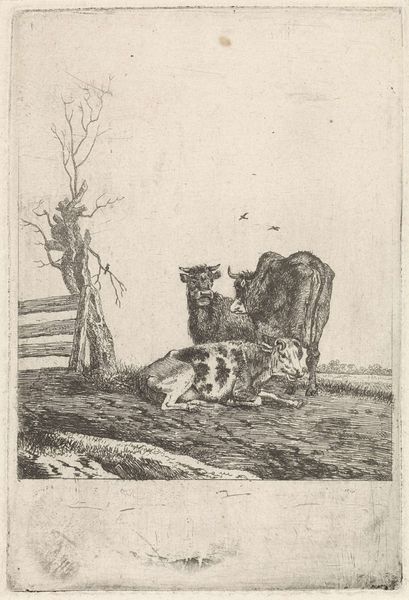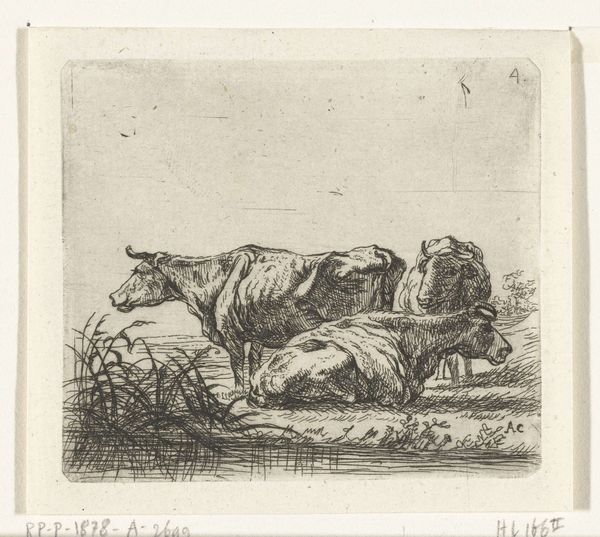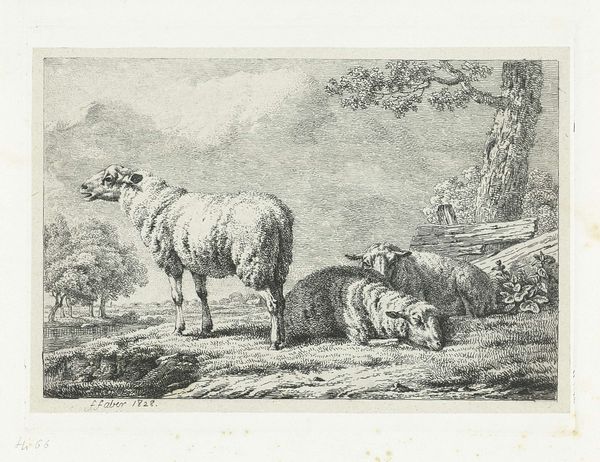
etching
#
quirky sketch
#
dutch-golden-age
#
pen sketch
#
etching
#
pencil sketch
#
sketch book
#
landscape
#
personal sketchbook
#
sketchwork
#
pen-ink sketch
#
pen work
#
sketchbook drawing
#
sketchbook art
#
realism
Dimensions: height 70 mm, width 75 mm
Copyright: Rijks Museum: Open Domain
Editor: Here we have Aelbert Cuyp's "Drie koeien," placing it somewhere between 1630 and 1691. It's a small etching currently residing at the Rijksmuseum. It feels like a quiet, everyday scene, but the line work is quite striking. What stands out to you in this work? Curator: Ah, Cuyp. He captures a pastoral idyll, doesn't he? For me, it's the palpable sense of contentment radiating from those cows. Look at the economy of line – the cross-hatching creating form and shadow. Imagine Cuyp sketching this *en plein air*, perhaps while whistling a little tune. Doesn't it make you wonder about the artist and their relationship with the land and with cows? Editor: It does, actually. They look pretty content and like they just plopped down right where they are! Why an etching instead of painting a giant landscape? Curator: A painting immortalizes grand estates; prints democratize art. This way, ordinary people could have art hanging in their homes. Though small in scale, it carries big ideas about connecting with nature. Do you think its modesty makes it less powerful? Editor: Not at all. The sketch-like quality almost makes it *more* powerful, in a way. It feels more immediate. It’s interesting that something so simple can feel so complete. Curator: Exactly! Simplicity, often a mask for genius! Now I want to find a grassy field with cows… or at least some ice cream! Editor: Haha, yes! A perfect way to wrap this up: cows, fields, and ice cream! I think I’ll be seeing cows in a different light now, thanks!
Comments
No comments
Be the first to comment and join the conversation on the ultimate creative platform.


